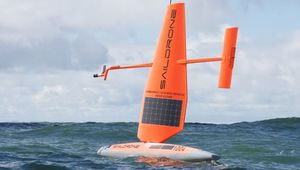DIGI XBee 3 Global LTE-M NB-IoT Development Kit
A global LTE-M/NB-IoT development kit for integrating cellular connectivity into XBee 3 Global LTE-M/NB-IoT devices.
Technical Specifications
| Product Type | Cellular Development Tools |
| Antenna | 1 U.FL (Cellular), 1 U.FL (Bluetooth®), 1 U.FL (GNSS |
| Form Factor | Digi XBee® 20-pin through-hole |
| Supported SIM Size | 4FF Nano |
| Security | Digi TrustFence® security with Secure Boot and Protected JTAG |
| Temprature Range | -40 to +85 Degrees Celsius |
| Interface | UART, SPI, USB |
| Applications | IoT devices, Sensor networks |
Overview
The Digi XBee® 3 Global LTE-M/NB-IoT Development Kit is a comprehensive toolset designed to accelerate the development and deployment of cellular IoT applications. It includes the necessary hardware, software, and documentation to prototype, test, and deploy IoT devices on global cellular networks quickly. The kit features the Digi XBee 3 Global LTE-M/NB-IoT cellular modem, which supports both LTE-M and NB-IoT, two low-power, wide-area cellular technologies ideal for IoT applications. The modem is pre-certified for use on major cellular networks worldwide, making it easy to deploy IoT devices anywhere.
Seamless Integration with Global LTE-M/NB-IoT Embedded Smart Modems
The development kit is meant to induce cellular connectivity into devices with the XBee 3 Global embedded smart modems. It supports LTEM and NB-IoT modems specially designed for low-power and wide-area cellular coverage applications. Therefore, it has a particularly important use case for IoT-based applications involving remote sensing and datalogging operations.
The kit combines flexible modules that speed up cellular connectivity integration with XBee 3 Global devices. It’s a much faster and more cost-effective approach than the FCC and carrier end-device certification process.
Additionally, the kit provides a step-by-step guidance for component assembly with examples. It enables a quick setup process for low-power communication connectivity with OEM devices like monitoring systems, sensors, etc.
It has proper documentation, including user manuals, application notes, and tutorials. Therefore, developers can quickly get used to the setup process and develop IoT-based applications for local and industrial use cases.
Easy-to-Use Development Kit
The DIGI XBee 3 Global LTE/M/NB-IoT development kit features a comprehensive set of devices that include:
DIGI XBee 3 Global LTE-M/NB-IoT embedded modem
SIM card for LTE-M cellular service out of the box
DIGI XBee 3 development board
Antennas and power cable
Three months of free cellular service
Free schematic review by DIGI WDS
Hence, it’s tempting for developers to ease them into the development process by eliminating tedious subscription and setup processes. Moreover, it features a software development kit featuring an intuitive and user-friendly interface. The interface allows the developer to manage the DIGI XBee 3 Global Modem. It offers reconfigurability and some pre-built functions that can help instantly add cellular connectivity to IoT applications.
The kit can seamlessly integrate using the standard DIGI XBee API frames and AT commands. It features an embedded programmability with MicroPython. The interface offers 13 digital pins, additional USB I2C communication, and up to 4 ADC lines supporting 10-bit operations.
The board also supports BlueTooth Low Energy operations and is available in Transparent API, UDP for NB-IoT, and Transparent and PI over serial, PPP over USB for LTE-M operating modes.
Its power-saving capabilities include a power save mode consuming 20 microamps. It’s a flexible kit, providing robust performance in various industrial conditions. Its temperature handline range varies from -40 to +85 degrees Celsius, allowing it to work efficiently in most industrial setups.
The kit ensures security thanks to over 175 security controls and complies with the latest security standards like ISO 27002, HIPAA, NIST, etc. The kit offers comprehensive operations and provides application cases for various tasks, such as IoT and sensor-based systems.
Where to find it

Mouser Electronics
Mouser Electronics is a worldwide leading authorized distributor of semiconductors and electronic components.











